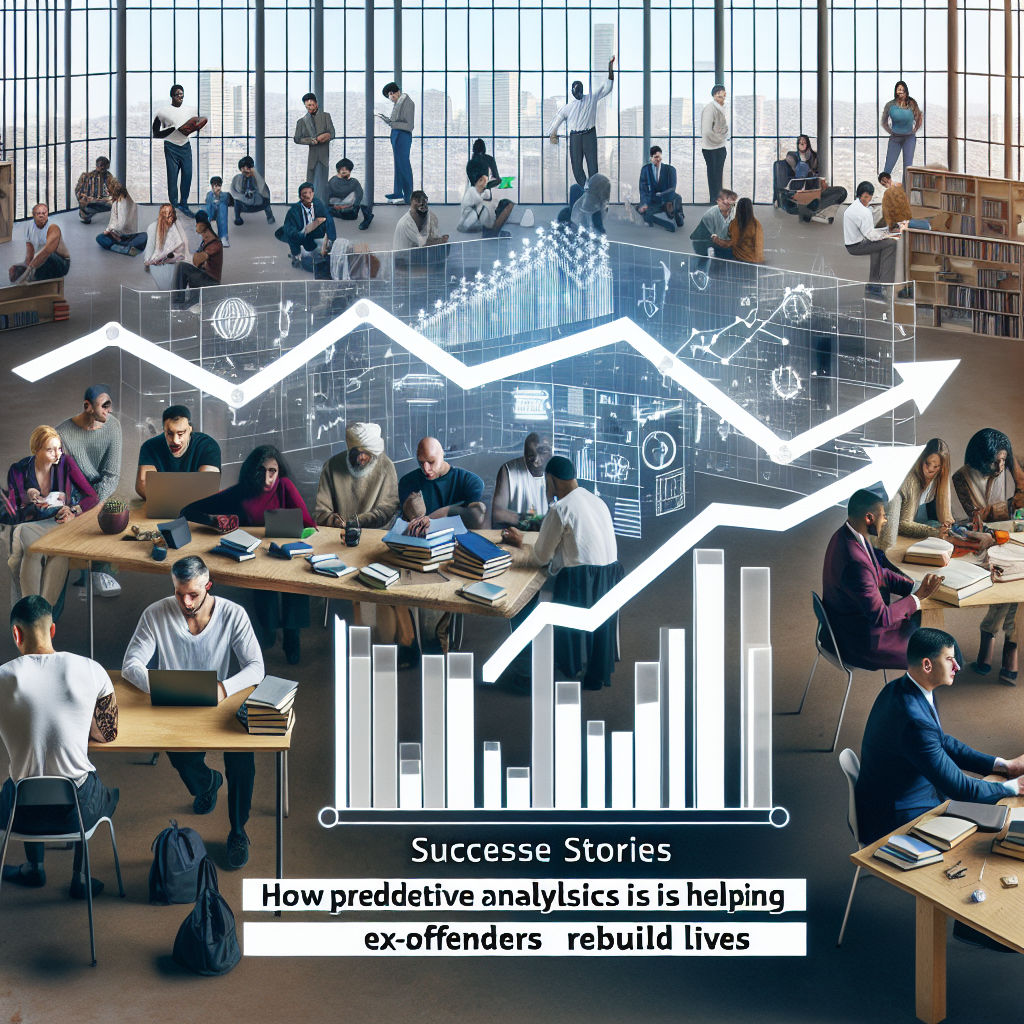
Introduction
In a world constantly evolving through technology, the criminal justice system finds itself at a crossroads. With recidivism rates remaining stubbornly high, the need for innovative solutions to assist ex-offenders in their reintegration is more crucial than ever. Enter predictive analytics—a powerful tool that’s proving to be a game-changer. Success Stories: How Predictive Analytics is Helping Ex-Offenders Rebuild Lives not only showcases the possibilities of this technology but also highlights transformative journeys of individuals reclaiming their lives.
Understanding Predictive Analytics
What is Predictive Analytics?
Predictive analytics uses statistical algorithms and machine learning techniques to identify the likelihood of future outcomes based on historical data. By analyzing patterns and correlations, it provides insights that can guide decision-making processes in various fields, including the social justice system.
The Role in Criminal Justice
In the context of helping ex-offenders, predictive analytics can serve multiple purposes:
- Risk Assessment: Identifying individuals who are at high risk of re-offending.
- Resource Allocation: Helping organizations distribute resources efficiently to support rehabilitation programs.
- Tailored Interventions: Creating personalized support plans based on an individual’s unique history, needs, and circumstances.
The Power of Data: A New Approach to Recidivism
Case Study 1: The Fortune Society
Overview: The Fortune Society in New York City has been a pioneer in using predictive analytics to enhance their re-entry programs for ex-offenders. By leveraging data, they were able to tailor their services to meet the specific needs of their clientele.
Implementation: The organization collaborated with data scientists to analyze factors that influence recidivism. By identifying trends, they could predict which individuals might struggle with reintegration.
Results: As a result, they reported a 30% decrease in recidivism among participants who received targeted services based on predictive analytics findings. This represents a monumental shift in how support systems can utilize data to foster a successful transition.
Analysis
The Fortune Society’s use of predictive analytics exemplifies the potential for tailored interventions. By understanding individual behaviors and taking proactive steps, organizations can significantly impact the lives of ex-offenders, making Success Stories: How Predictive Analytics is Helping Ex-Offenders Rebuild Lives all the more compelling.
Breaking Down Barriers
Case Study 2: Clean Slate
Overview: Clean Slate is a program focused on helping individuals with criminal records expunge their records—a significant barrier to employment. Through predictive analytics, Clean Slate aimed to determine which individuals were most likely to succeed in securing employment after record expungement.
Implementation: Using historical data, Clean Slate identified key variables that contributed to job placement success. The program was able to streamline its outreach to the most promising candidates.
Results: Participants in tailored programs saw a 40% increase in job placement rates compared to the traditional support methods. This not only changes lives but also promotes public safety by decreasing the likelihood of re-offending.
Analysis
Clean Slate demonstrates how predictive analytics can serve as a powerful ally in reducing barriers to employment for ex-offenders. Not only does this improve individual lives, but it also fosters societal benefits, reinforcing the principle that effective rehabilitation can lead to successful reintegration.
Empowering Change with Predictive Analytics
Case Study 3: Rethink Justice
Overview: Rethink Justice, a nonprofit organization, takes a data-driven approach to assist ex-offenders in navigating the complexities of the re-entry process. By employing predictive analytics, Rethink Justice aimed to foresee potential challenges faced by ex-offenders in their journey.
Implementation: They developed algorithms that analyze socio-economic factors, psychological metrics, and community resources available to each individual.
Results: The tailored support led to an impressive 20% reduction in recidivism rates over two years. The program became a model for other organizations seeking to utilize data for social good.
Analysis
The success of Rethink Justice underscores the importance of understanding the multi-faceted challenges faced by ex-offenders. Through data, they provide a roadmap to successful reintegration, embodying the essence of Success Stories: How Predictive Analytics is Helping Ex-Offenders Rebuild Lives.
The Future of Predictive Analytics in Rehabilitation
Innovations on the Horizon
Predictive analytics is continuously evolving, opening up new channels for aiding ex-offenders. Here’s how future innovations might unfold:
- Real-Time Data Analysis: Utilizing mobile technology to track progress and failures in real-time.
- Enhanced Communication: Apps and platforms that connect ex-offenders with mentors or support groups directly based on predictive data.
- Broader Collaboration: Teams across social services, employment agencies, and law enforcement working together, guided by the insights gleaned from predictive analytics.
The Global Perspective
Countries around the world are beginning to catch onto the trend. For instance, the UK has launched pilot programs that leverage predictive data to target drug rehabilitation efforts for ex-offenders, showcasing a global momentum toward understanding and utilizing data.
Conclusion
Success Stories: How Predictive Analytics is Helping Ex-Offenders Rebuild Lives shines a light on the untapped potential of data-driven decision-making in criminal justice. Through real-world examples, we see how predictive analytics can guide interventions and improve outcomes. As the landscape continues to evolve, embracing these technologies holds the key to reducing recidivism and allowing individuals to reclaim their lives.
FAQs
1. How does predictive analytics contribute to supporting ex-offenders?
Predictive analytics helps organizations identify individuals at risk of re-offending and tailor intervention programs accordingly, improving the chances of successful reintegration.
2. What organizations are using predictive analytics for ex-offender programs?
Organizations like The Fortune Society, Clean Slate, and Rethink Justice have successfully implemented predictive analytics to enhance their rehabilitation efforts.
3. Can predictive analytics completely eliminate recidivism?
While predictive analytics can significantly reduce recidivism rates, it cannot eliminate it entirely. Other factors, such as community resources and personal circumstances, also play crucial roles.
4. How can I advocate for the use of predictive analytics in my community?
Engage with local non-profits, advocate for policy changes, or support data-driven initiatives that focus on rehabilitation and reintegration for ex-offenders.
5. What measures should be taken to ensure data privacy for ex-offenders?
Strict compliance with data protection laws, anonymization of data, and transparency about how data is used are critical steps to protect the privacy of individuals.
This article illustrates not only the significance of predictive analytics but also the potential for change within our communities. By sharing Success Stories: How Predictive Analytics is Helping Ex-Offenders Rebuild Lives, we can inspire further innovations and advocate for individuals seeking a fresh start.


















